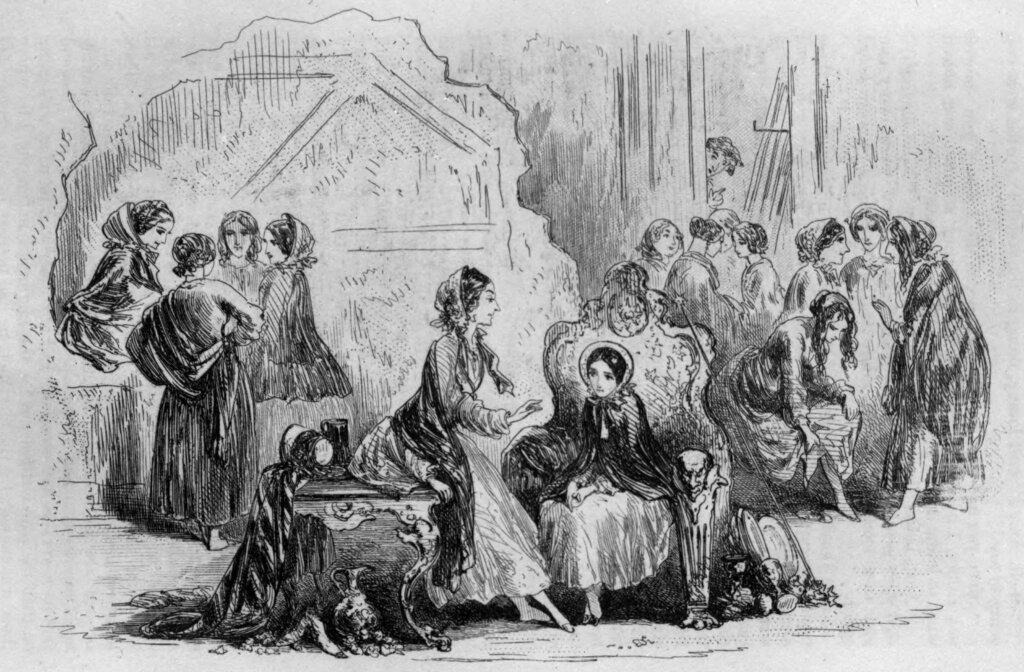This article was originally published on the University of California Press Blog on January 7, 2021, and was written by Jonathan Grossman, Professor of English at UCLA.
 If you want a grasp of why and how the nineteenth-century novel matters now, indulge yourself in four brilliant essays on Charles Dickens’s Little Dorrit, brought to you by Nineteenth-Century Literature.
If you want a grasp of why and how the nineteenth-century novel matters now, indulge yourself in four brilliant essays on Charles Dickens’s Little Dorrit, brought to you by Nineteenth-Century Literature.
Nineteenth-Century Literature‘s special issue on Little Dorrit features Sukanya Banerjee, Kathleen Frederickson, Daniel Stout, and Jason Rudy. Their essays originated from, and represent, a week of superb talks by the all-star cast of Dickens Universe in 2018.
The mix of essays reminds us that sometimes we do our best and most ambitious theoretical work by eyeing sharply a novel that can still astonish us.
Here are some teasers from the authors below.
We asked the authors, “Where did the idea for your article arise and how did the final result surprise you?”
I wrote this essay in response to a basic question that has interested me for a while: How does one account for the intimate relation between literature and bureaucracy? Both involve writing (lots of it), and lots of writers, especially in the nineteenth century, were bureaucrats. Yet bureaucracy is understood in terms of its routinized labor, whereas literary composition is about inventiveness and creativity. Little Dorrit offered the opportunity to pursue this counterintuitive relation further, not least because Charles Dickens takes his place as perhaps the most prolific novelist in terms of the sheer number of characters that he invents, and the novel’s Circumlocution Office typifies the stultifying creative aridity that we attribute to bureaucracies. How, then, does the novel address the tension between the imaginative excess that produces it and the paucity of imagination embodied by the Circumlocution Office that it imagines into being? Delving into this question, also led me to an examination of Victorian liberal ideology, which was perhaps to be expected since bureaucracies constitute a key feature of the nineteenth-century administrative state. But in consequently tracing the relation between the “administrative state,” and “legislative practice,” between what is mandated by competent authority vis-à-vis “popular will,” I was taken aback by the “nowness” of the argument that opened up before me. When I started writing the essay, my plan was to write on Little Dorrit not on “Little Dorrit Now,” but that the “nowness” insinuated itself so easily into the essay speaks to the timeliness of considering Little Dorrit as well as the world that produced it.
I am at work on a book about sexuality, space, and biosecurity. So, when I was asked to present a lecture on Little Dorrit, the quarantine setting seemed like something that would fit well with those interests. After all, the nineteenth-century debates about quarantine and the geopolitics of Britain’s informal empire invoke all three of those terms. As this was back in 2019, I had no way of knowing that COVID-19 would make quarantine a timely topic. I set out assuming I’d write about Miss Wade, who has been the focal point for more or less all of the queer studies scholarship on Little Dorrit. But as I was writing, it quickly became clear that Tattycoram was a much more interesting figure for this project. And I got curious about why she had become so overshadowed by Miss Wade in the criticism—what does it say that Miss Wade rather than Tattycoram has appeared as the go-to figure for sexuality studies?
My essay develops a connection between Little Dorrit and “Gone to the Dogs,” a relatively unknown essay Dickens wrote for Household Words in 1855. I came across “Gone to the Dogs” just reading around in what Dickens was doing while beginning Little Dorrit. It’s a captivating essay—hilarious, terrifying; its ending is amazing. But it was actually the ostensibly comic opening paragraphs on the inevitability of “going to the dogs” that helped me describe the pervasive sense in Little Dorrit that life is beyond repair, that the period of meaningful action lies in the past. This condition–a present in which, as Adorno says, “there is life no longer”–is the central theme of his Minima Moralia: Reflections from Damaged Life, so it’s to that work that my subtitle alludes. I think one of the surprises, here, lies in the tension between Little Dorrit’s futurelessness and our traditional expectations about the 19th-century novel as a progressive form (chronologically, morally, politically, etc.). I was occasionally tempted to cast Little Dorrit as an anti-novel, but in the end decided that’s not quite right, either. Individual experience, or individual orientation, still matters to Little Dorrit—even if nothing hinges on it.
When I was first asked to think about Little Dorrit, I intended to situate the novel in relation to Australia. I was thinking circulation, reception, etc.: nineteenth-century readers in Australia taking account of Dickens’ novel. The project developed in a very different way as I thought instead about the ways Australia is and is not part of the novel itself. More than anything, what surprised me was how generative it was to consider Australia’s many absences in Little Dorrit: the spaces where Dickens might have turned to Australia (as either a destination or a concept) but ultimately did not. What does a settler-colonial frame bring to a novel having little to do with settlers or colonialism?
We invite you to read Nineteenth-Century Literature’s special issue, “Dorrit Now” for free online for a limited time.
This post is published in conjunction with the 2021 virtual conference of the Modern Language Association. We encourage you to share the link using the hashtag #MLA2021.
 If you want a grasp of why and how the nineteenth-century novel matters now, indulge yourself in four brilliant essays on Charles Dickens’s Little Dorrit, brought to you by Nineteenth-Century Literature.
If you want a grasp of why and how the nineteenth-century novel matters now, indulge yourself in four brilliant essays on Charles Dickens’s Little Dorrit, brought to you by Nineteenth-Century Literature. Sukanya Banerjee (University of California, Berkeley)
Sukanya Banerjee (University of California, Berkeley) Kathleen Frederickson (University of California, Davis)
Kathleen Frederickson (University of California, Davis) Daniel Stout
Daniel Stout Jason Rudy
Jason Rudy